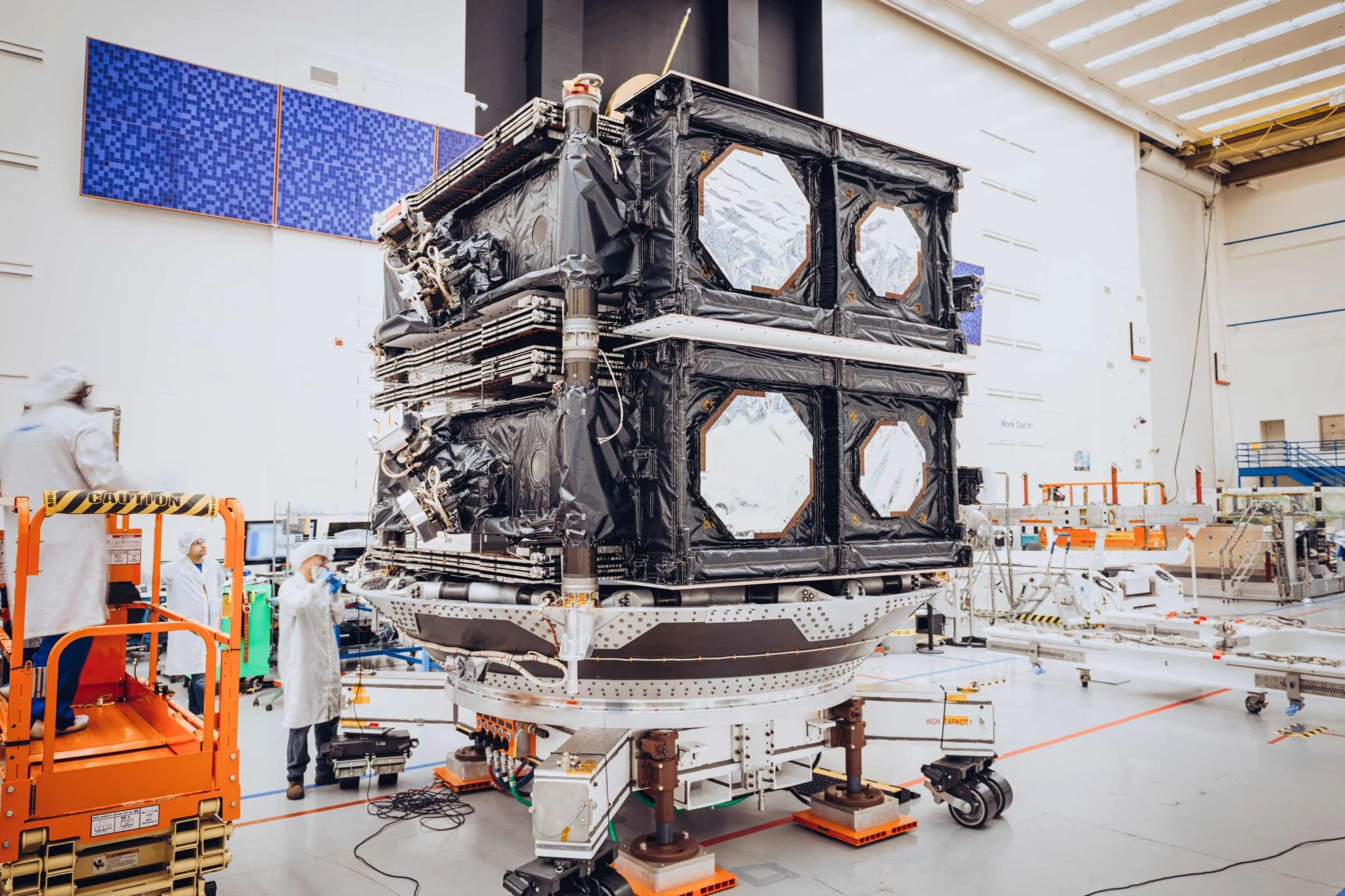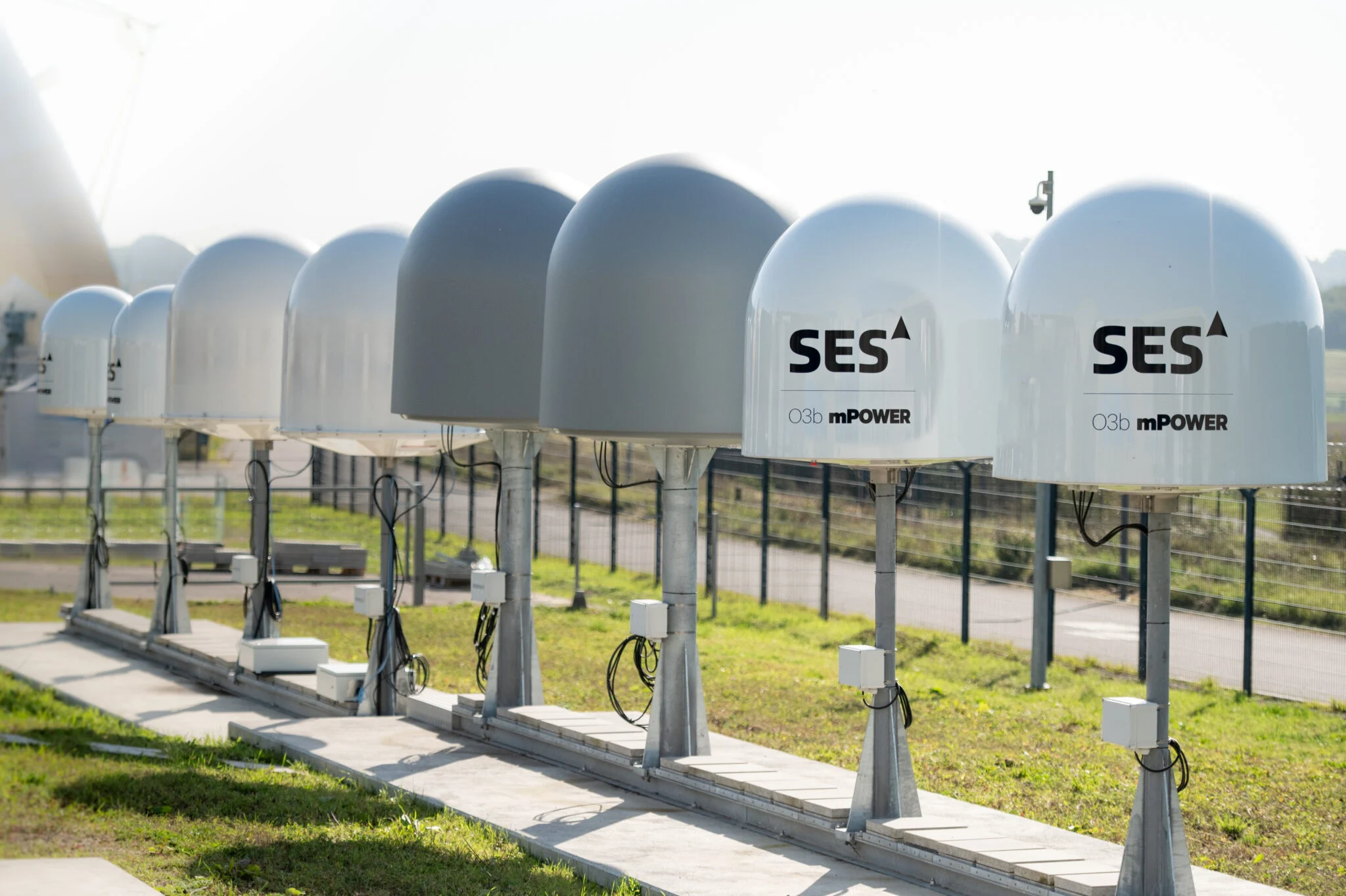La constelación de órbita terrestre media O3b mPOWER permite a las naciones mantener el control y la autonomía sobre sus redes espaciales y salvaguardar la seguridad nacional, y establecer capacidades de comunicaciones soberanas sin depender únicamente de los sistemas satelitales de propiedad gubernamental.
In this Q&A with Stewart Sanders, executive vice president of Space Programs at SES, we discuss: the value of medium-Earth orbit (MEO) for high-throughput, low-latency communications; the company’s O3b mPOWER second-generation satellite constellation in MEO; and how governments and supranational alliances can use this new system to create their own wholly controlled and flexible sovereign space networks.
Breaking Defense: Tell us about SES’s vision and execution for the world’s first commercial MEO constellation for satellite communications?

Sanders: With the 20 O3b satellites that have been up and running since 2014, SES launched the first commercial use of not just MEO but non-GEO. With O3b mPOWER, we’re leveraging the existing development of MEO and low-latency high-throughput Ka-band, and bringing extra features across both commercial and government segments.
Of the segments we serve, government will see a big uptick in benefits and in the number of use cases supported. It’s about scaling what we’ve already been delivering and providing additional benefits such as ensuring you can always connect directly to a gateway, including sovereign gateways. Our latency will support the vast majority of the technical solutions that the customers need.
In MEO, we don’t have the challenges associated with scale as with some other non-GEO systems. To get the necessary coverage and start the service, the minimum number of O3b mPOWER satellites is just six. Other non-GEO, e.g. LEO systems, require many more satellites and gateways because they orbit closer to Earth and each satellite can only provide coverage over a smaller surface of the Earth.
That’s not to say that LEO doesn’t bring something to the table. All satellite orbits do, and that’s why governments’ preferred architecture for additional resiliency and security is an integrated multi-orbit satellite network of which MEO will continue to be a key part.
Breaking Defense: Tell us about O3b mPOWER system and its capabilities?
Sanders: The current O3b version is an analog-based design with 12 mechanical steered beams on each satellite, two of which are gateway beams, and 10 of which are user beams. Each of those user beams has an analog transponder of 216 MHz in the Ka-band, which supports a very high throughput. During some critical missions, the feedback we got from the NATO customers was that the ability of O3b MEO to transmit large ISR data files over satellite was game changing compared to when data had to be put on a tape deck and literally flown out of theater for analysis.
With O3b mPOWER, the technology evolved further: there are no mechanical steered beams. It’s a full phased radiating array, one transmit/one receive, that’s coupled with a fully digitized processor-based payload. The entire spectrum that can be addressed is digitized and we can generate over 5,000 beams.
In reality, we’ll be mostly generating a smaller number of larger beams, depending on the requirements. Be it a gigabit per beam, or up to 10 gigabits per beam depending on the need. We can even start as low as tens of megabits per beam at the low end and scale with the customer. That can be applied in a dynamic way in real time, scaling up, down, and moving the beams all independently depending on what the end user needs.
Government customers highly regard O3b mPOWER’s exceptional capabilities, specifically its flexible return link capacity, dedicated CIR, operational flexibility, and network scalability, which other constellations may find challenging to match. ISR customers commonly seek a 45 Mbps RTN throughput. Throughput demands are expected to surge to 100 Mbps in the next five years for larger UAVs as the integration of more sensors and complex data requirements materializes.
Six O3b mPOWER satellites are already in orbit and commercial service is expected to start in Q2 2024.
The constellation’s space and ground system is software-driven. Instead of having hundreds of wires and equipment, the system is dependent on software that can be easily updated from an operations center.
In addition, SES has built the first of its kind Adaptive Resource Control (ARC) system for O3b mPOWER, bringing unprecedented automation. Designed by a dedicated team within SES, the ARC is the network’s control center and brains of the system. It manages the applications that are being used and automatically allocates the appropriate resources, including satellite service to efficiently serve the customers.

Breaking Defense: O3b mPOWER will make it possible for nations around the world to build what you call ‘sovereign space networks.’ How do you define that, and why are countries and supranational alliances increasingly moving toward them?
Sanders: Technological sovereignty in space enables a nation to maintain control and autonomy over their networks and is needed to protect sensitive information, avoid dependencies on external entities and/or vendor hardware, and to safeguard national security.
With O3b mPOWER they can have 100 percent control while leveraging commercial practices and commercial SATCOM investment. Compared to government proprietary systems, it is a pragmatic and cost-efficient choice. Using O3b mPOWER for the space link allows government customers to leverage their legacy equipment, hardware and security systems, saving considerable time in comparison to the procurement and construction of a complete new end-to-end system.
What we’re offering is the ability for the government user to build partially or entirely virtual networks that are theirs to control, theirs to own even – with the only touch point being the spacecraft, which gives them the building blocks to bring their own equipment and gateway. Or, if they choose, they can use our gateway. We can also build a gateway for them and then give them the ‘keys’ to that gateway. They can build a secure enclave, a virtual network of their own, which they have complete control over with their own equipment on our satellites.
On the supranational level, sovereignty provides independence from systems owned by non-allied parties while enabling networks to work collaboratively as needed, accommodating the possibility of shifting alignments among countries.
That’s different from some of the other commercial operators where you are tied down to specific equipment choices in what we refer to as a closed network.
However, SES has an open network. That doesn’t mean it’s open from a security point of view, but it means that there is much more flexibility on the choice of equipment than can be used across the satellites.
Government customers can also have control over performance and geographic reach with added resiliency for any application. In addition, they can own their ground network and leverage O3b mPOWER’s secure, steerable beams with location obfuscation.
Built according to the Committee on National Security Systems (CNSS) Policy 12, O3b mPOWER brings the capability to deploy government waveforms with TRANSEC via the waveform agnostic design, is inherently jam- and interception-resistant, and can offer an end-to-end connectivity service that delivers maximum security and resilience.
The core of SES is based in Luxembourg, and we’re working with the Luxembourg government on a framework agreement administered by the NSPA, the NATO Support Procurement Agency. We fully expect other NATO countries to come into that framework. That means they can create these sovereign solutions on their own or share hardware, investment, and capacity with NATO allies in a flexible way.
Breaking Defense: Final thoughts?
Sanders: The flexible architecture of O3b mPOWER is optimized for government control with integrated sovereign capabilities, and compatible with government special purpose waveforms such as Protected Tactical Waveform in the U.S.
Dedicated O3b mPOWER sovereign service also allows for customer-owned/operated fixed and deployable private gateways, removing constraints of traditional or previous-generation sovereign systems.
The new satellite constellation has the ability to satisfy both mobile and fixed network requirements via secure beam steering.
And finally, there’s also the possibility of hosted payloads for governments in future launches.
Fuente: https://breakingdefense.com


